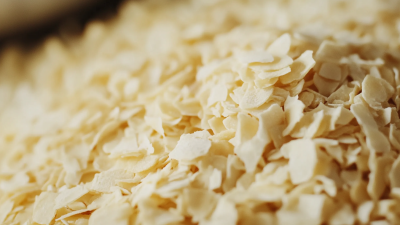
In the world of homemade snacks, few delights rival the crispy crunch of freshly made potato chips. If you're looking to elevate your snacking game, investing in a high-quality Potato Chips Slicer Cutter is essential. This guide will provide you with valuable tips and insights into choosing the right slicer, ensuring you achieve perfectly sliced potatoes every time. From thickness adjustments to slicing techniques, we will explore the key features that make a Potato Chips Slicer Cutter a must-have tool in any kitchen. Whether you prefer your chips thin and crispy or thick and hearty, mastering the slicing process will unlock a world of flavor and creativity in your snack preparations. Prepare to indulge in the satisfying experience of crafting your very own potato chips at home, with the help of expert advice and practical tips tailored for enthusiasts and beginners alike.

When it comes to making the perfect homemade potato chips, choosing the right slicer or cutter is crucial. There are several types of potato chips slicers available, each offering diverse functionalities tailored to different preferences. According to a recent industry report by Market Research Future, the kitchen appliances market is expected to reach $290 billion by 2025, with potato slicers contributing significantly due to the rising popularity of homemade snacks.
One of the most common types is the mandoline slicer, known for its versatility and precision. This tool allows for uniform slicing, which is essential for achieving chips that cook evenly. Additionally, there are electric slicers that automate the process, making it easier for those who want convenience without sacrificing quality.
Meanwhile, spiral slicers, while typically used for vegetables, can also create unique chip shapes that add flair to your homemade snacks, catering to the growing interest in gourmet-style cooking at home. By understanding the various types of slicers available, enthusiasts can enhance their potato chip-making experience while ensuring delicious, crispy results.
When searching for the perfect potato chips slicer, it’s essential to consider key features that will enhance your homemade snack experience. The first feature to prioritize is the blade type. Look for stainless steel blades that ensure sharpness and durability. A serrated edge can also provide a better grip on the potato, resulting in cleaner, more uniform slices. Moreover, adjustable thickness settings are crucial; having the ability to customize slice thickness allows you to experiment with different chip styles, from thick-cut rustic chips to delicate, crispy ones.

Another important aspect is the ease of use. A good potato slicer should be intuitive, allowing you to quickly prepare your ingredients without a hassle. Some slicers come with safety features like hand guards or suction bases to prevent slipping, which can significantly enhance safety while slicing. Don't overlook the importance of easy cleanup as well; many slicers today are dishwasher safe or have components that can be easily detached for cleaning.
Tip: Always soak your potato slices in cold water for at least 30 minutes before frying. This step not only helps remove excess starch but also results in a crispier texture once fried. Additionally, try seasoning your chips with various spices to elevate their flavor!
When it comes to creating the perfect homemade potato chips, selecting the right potato variety is crucial. The ideal potato for chips should possess a high-starch content, which leads to a crispier texture when fried. Varieties such as Russet and Yukon Gold are popular choices due to their starchy composition and excellent flavor. Russets, in particular, contain less moisture, which helps achieve that desired crunch. Alternatively, Yukon Golds offer a slightly buttery taste, adding a unique flavor profile to your snacks.
Beyond starch content, the shape and size of the potatoes also matter. For uniform chips, opt for medium-sized potatoes that can be easily sliced into even pieces. This ensures consistent cooking and browning during the frying process. Additionally, it's essential to consider the skin - while some prefer skins for added texture, others may choose to peel their potatoes for a smoother finish. By understanding these nuances in potato varieties, you can elevate your homemade chip-making experience and enjoy snacks that are not only delicious but also perfectly crispy.

Cutting potatoes into the perfect shape for homemade potato chips requires a combination of the right tools and techniques. Start by selecting a sharp mandoline slicer or a high-quality knife, as these will ensure consistent cuts that cook evenly. When using a mandoline, adjust the thickness setting to your preference, typically around 1/8 inch for a crispy texture. Always use the safety guard provided to avoid accidents and achieve a uniform slice.
Additionally, preparation techniques can greatly impact the final result. To enhance crispiness, soak the sliced potatoes in cold water for at least 30 minutes; this removes excess starch and helps achieve that desired crunch. After soaking, dry the slices thoroughly with a clean towel or paper to prevent oil splatter during frying. Finally, frying in small batches will maintain the oil temperature, resulting in evenly cooked chips. By mastering these tips and techniques, you can enjoy perfectly sliced and fried potato chips every time.
This bar chart illustrates the different thickness levels of potato chips and their corresponding preference ratings from a survey conducted among snack enthusiasts. The data shows how the thickness of potato chips affects their popularity and consumer satisfaction. Finding the perfect thickness is key to achieving that ideal crunch and flavor.
When it comes to enhancing your homemade potato chips, seasoning and cooking methods play crucial roles in achieving that perfect crunch and rich flavor. After slicing your potatoes to your preferred thickness using a reliable chip slicer, the next step is to soak them in cold water for about 30 minutes. This helps to remove excess starch, resulting in crispier chips. Once drained and dried, you can liberally sprinkle on seasonings. Classic options like sea salt and vinegar evoke a traditional flavor, while innovative blends such as garlic powder, paprika, or even ranch seasoning can elevate your snack to gourmet status.
When it comes to cooking methods, you can choose between frying and baking, each offering distinct textures and tastes. Deep frying yields that irresistible golden brown and extra crunch, but for a healthier alternative, air frying or baking at a high temperature can also produce delightful results. As you explore different methods and seasonings, don’t hesitate to experiment—combine flavors or even add toppings like cheese or herbs after cooking. With a bit of creativity and the right approach, your homemade potato chips can be customized to suit any palate, ensuring that every batch is unique and delicious.





